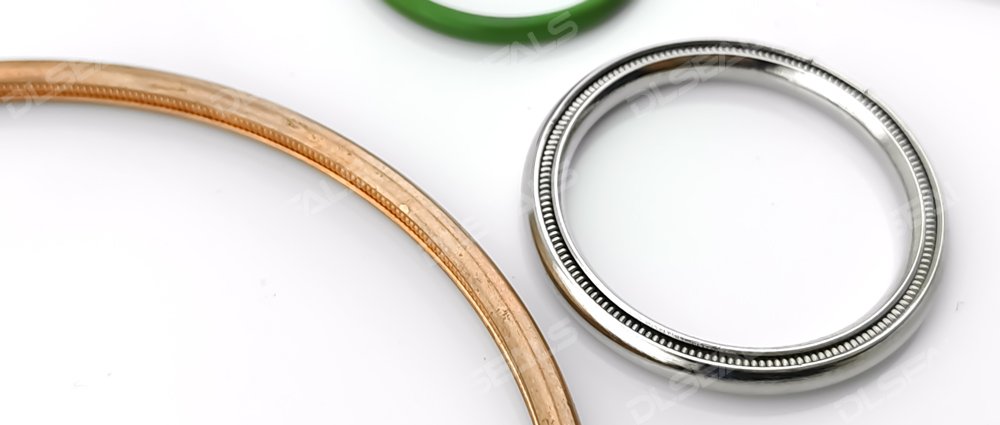News
A2024-08-25

Metal seals have become an indispensable component in the industrial field due to their excellent durability and reliability in high temperature, high pressure and extreme environments. In order to ensure the stable performance of metal seals in long-term use, correct installation and scientific maintenance are essential. This article will explore the installation and maintenance tips of metal seals to help users maximize the service life and reliability of seals.
1. Installation tips for metal seals
1. Carefully check the seal and contact surface
Before installing the metal seal, you must carefully check the condition of the seal itself and its contact surface. Make sure that the seal has no defects such as damage, deformation, scratches, etc., and the contact surface should be flat, smooth, free of rust and contaminants. This step is crucial because any minor flaws may cause the seal to fail.
2. Correct installation direction
The installation direction of the metal seal must be strictly in accordance with the manufacturer's requirements. Some seals are designed to be unidirectional, and the wrong installation direction may cause a significant decrease in sealing performance. Therefore, before installation, you should carefully read the product manual to ensure that the seal is installed in the correct direction.
3. Use appropriate installation tools
In order to avoid damage to the seal during installation, it is recommended to use professional installation tools. Especially when installing metal seals with small size or complex shape, using tools can ensure uniform force and avoid unnecessary mechanical damage to the seal.
4. Control the installation force
During the installation process, the force applied to the seal should be properly controlled. Excessive force may cause deformation or damage to the seal, and too little force may not achieve a good sealing effect. The torque specifications provided by the manufacturer should be followed to ensure that the installation force is within the appropriate range.
5. Gradually and evenly tighten
When installing bolts or fixtures, a step-by-step and even tightening method should be adopted. First, tighten the bolts in a diagonal order and gradually increase the tightening force in stages. This helps to avoid uneven stress distribution on the seal and ensure the sealing effect of the seal after installation.
2. Maintenance tips for metal seals
1. Regularly check the status of the seal
Regularly checking the status of metal seals is the key to ensuring their long-term reliability. The inspection content includes the wear and corrosion of the sealing surface, and whether the seal is loose or deformed. Through regular inspections, potential problems can be discovered in time to avoid equipment failures caused by seal failure.
2. Cleaning and lubrication
During the maintenance process, it is very important to keep the seal and its contact surface clean. It is recommended to regularly remove dirt, grease and other contaminants from the surface of the seal. In addition, according to the working environment and the material properties of the seal, the appropriate addition of lubricant can reduce friction and wear and extend the service life of the seal.
3. Environmental monitoring and adjustment
Metal seals are usually used in harsh environments such as high temperature, high pressure or chemical media. Therefore, regularly monitoring the temperature, pressure, chemical composition and other parameters of the use environment, and timely adjusting the installation or maintenance strategy of the seal according to the changes, can effectively prevent the seal from failing prematurely under harsh conditions.
4. Replace worn seals
Although metal seals have a long service life, they will inevitably wear out after long-term use. When the wear degree of the seal reaches a certain standard, it should be replaced in time. When replacing, it should be carried out strictly in accordance with the original specifications and models to avoid seal failure due to seal mismatch.
5. Record and track maintenance history
It is recommended to establish a maintenance record file for the seal, and record in detail the content, time, problems found and measures taken for each maintenance and inspection. By tracking the maintenance history, we can better understand the use of seals, predict their service life, and develop a more scientific maintenance plan.
III. Conclusion
Metal seals play an irreplaceable role in many key applications, and their reliability is directly related to the safety and performance of the equipment. Through correct installation and scientific maintenance, the service life of metal seals can be significantly extended to ensure that they can still provide stable sealing performance under complex working conditions. Whether in the initial installation or in long-term use, paying attention to details and strictly following the specifications are effective ways to ensure the long-term reliability of metal seals.
[DLSEALS kindly Reminder] Sealing issues? Turn to DLSEALS! As a sealing component manufacturer, we specialize in customizing sealing components, providing a full range of services from design, research and development, production, testing, and more. If you have more information you'd like to know, feel free to contact us directly. DLSEALS's product experts are dedicated to serving you!